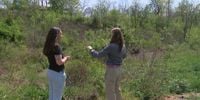The Supreme Court’s 2023 decision in Sackett v. EPA significantly weakened the Clean Water Act (CWA) by stripping away federal protections for millions of acres of wetlands and streams. Now, the Environmental Protection Agency (EPA) under President Trump is pushing to further erode safeguards for these vital water bodies by narrowing the definition that determines which waters are protected. This not only threatens the wildlife, businesses, and people who depend on these waters, but also puts nearby communities at greater risk of flooding, water pollution, and water shortages—all to benefit corporate interests that prioritize profits over protecting these waterways.
The Union of Concerned Scientists (UCS) is fighting to defend these valuable resources. Shortly after announcing the proposed changes to the government’s definition of “Waters of the United States” (WOTUS), the EPA and the Department of the Army opened a 30-day written comment period to gather feedback on the proposal. Dr. Stacy Woods, a geostatistician and environmental scientist, submitted comments on behalf of UCS and its more than 500,000 supporters, which can be read online. UCS also joined partners in the Clean Water for All coalition to submit a joint response.
During an EPA listening session, Dr. Woods delivered oral testimony urging the agency not to narrow the definition of WOTUS. "I’m here today to urge the EPA to include wetlands and other water bodies in the definition of 'Waters of the United States' (WOTUS) to the fullest extent permitted following Sackett," she stated. She emphasized that the Supreme Court ruling removed federal protections from millions of acres of wetlands and streams across the country. In 2023, the definition of WOTUS was updated to align with the Sackett decision, making any further narrowing unnecessary and imprudent.
When wetlands lack federal protections, they are at risk of being damaged or destroyed by industries seeking to maximize profits regardless of environmental costs. Even before the Sackett decision, wetlands were losing ground in the United States. Between 2009 and 2019, over 650,000 acres of wetlands were lost in the US—that’s equal to the land size of Rhode Island. Wetlands in the Upper Midwest offer nearly $23 billion in residential flood protection each year, a benefit now threatened by the reduction in federal wetland protections.
Wetlands do more than soak up water and reduce flooding in nearby communities. They also provide substantial benefits to commercial fishing, water supply, water quality, carbon capture, and recreation, amounting to over $7.7 trillion per year, according to the US Fish and Wildlife Service. Research shows that even wetlands that appear isolated on a map are often still connected to other waters. Narrowing the definition of protected waters would mean ignoring how water moves across the landscape—and ignoring scientific evidence that shows how wetland and stream pollution can harm rivers and lakes downstream.
The definition of WOTUS was already amended to align with the Sackett decision. Any further restrictions go beyond what is required and would threaten wetlands, streams, downstream rivers and lakes, and the communities that rely on these waters. On behalf of UCS and its more than 500,000 supporters—including many whose communities, livelihoods, and well-being are directly impacted by nearby wetlands and streams—Dr. Woods thanked the EPA for the opportunity to provide comments on the definition of Waters of the United States.
In a proactive move, the EPA and the Department of the Army announced a public listening session to hear directly from people who depend on clean, safe wetlands and streams. This session is set to take place on May 14, 2025, with both virtual and in-person participation options. A second listening session will also be announced soon. Participants must register in advance to give comments, and speaker slots fill up quickly. UCS has created a guide with talking points for the May 14 session, ensuring that community voices are heard.
Meanwhile, in a related effort to protect water quality, Great Parks and The Nature Conservancy in Ohio have embarked on a restoration project at Shawnee Lookout, an area that has served multiple purposes over the years. The first stage of this project involves daylighting streams that had been buried underground when the land was converted into a golf course. Jessica Spencer, the director of natural resources for Great Parks, explained, "Daylighting is where we are going to take the water that’s currently funneled through underground drainage to bring it back to the surface so that it is more accessible to the wildlife, and it’s better for water quality."
Shawnee Lookout is located in Southwest Ohio, near where the Great Miami River drains into the Ohio River. Experts believe that restoring the environment at this site will protect water quality not just locally, but potentially all the way down to the Gulf of Mexico. Jennifer McDonald, a restoration ecologist and project lead for The Nature Conservancy in Ohio, noted, "We’re really excited about the Shawnee Lookout project because there’s been development in the Great Miami watershed, and this allowed us to pool our resources and make a large-scale restoration project at one site."
The daylighting of streams is entirely funded by The Nature Conservancy through their Ohio Mitigation Program, which consolidates money from permitted impacts to local waterways and uses those resources to execute strategic projects that help the environment. This restoration effort is slated for completion by fall 2025 and is just one piece of the larger 150-acre project that Great Parks plans to accomplish.
As both the EPA and local initiatives like the Shawnee Lookout project work towards safeguarding water quality, communities are urged to engage and advocate for the protection of their vital water resources. The ongoing efforts highlight the importance of wetlands and streams in maintaining ecological balance and supporting local economies.





